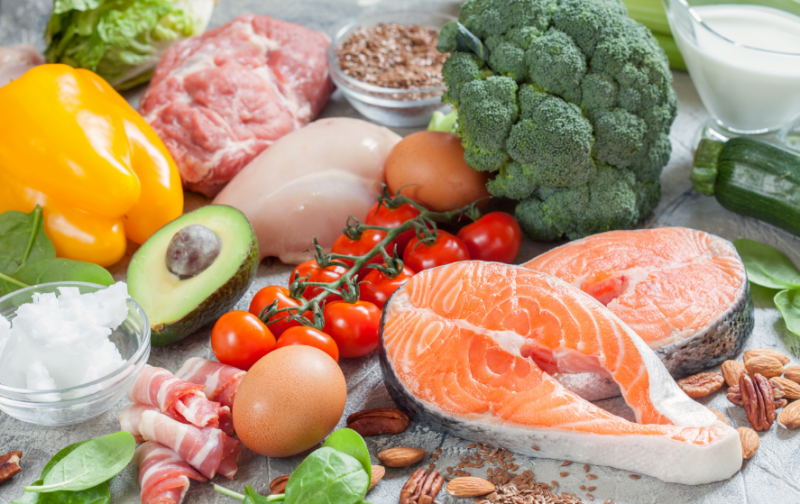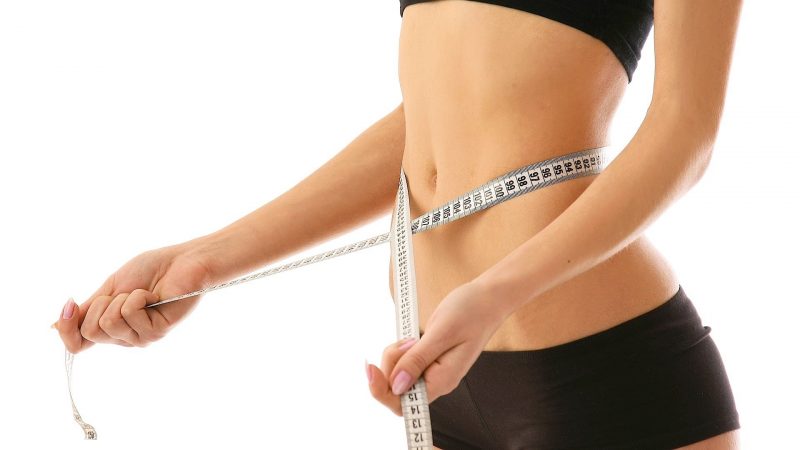Ketone diet is a rather interesting way to reduce weight, which was originally used in the treatment of children with epilepsy. Having lost its relevance in the field of neurology, keto diet has gained popularity among athletes who want to build muscle and ordinary people seeking to get rid of hated body fat. Read about this effective and uncomplicated way to make your body attractive.
Material Content:
Principles and features of a keto diet
Ketone or, as it is also called, a ketogenic diet is based on the maximum reduction in sugar intake and an increase in fat intake. This method of losing weight may seem somewhat strange or even absurd, because fatty foods are a direct way to gain weight. Science easily explains why this method of losing weight is quite effective.
Fats are an alternative source of energy in the human body. With the scarce intake of carbohydrates - the main source of energy - the body is forced to break down fats (lipids), the reserves of which are under the skin and around internal organs. In the liver, lipids are metabolized to fatty acids and special substances, the so-called ketone bodies. The latter are used by the body as a source of energy instead of glucose.
During a low-carb ketogenic diet, the body goes into a special physiological state - ketosis, which consists in the formation of ketone bodies in the liver in exactly the amount needed to produce energy.
The effectiveness of the ketogenic diet for epilepsy is explained by an increase in the concentration of ketone bodies in the blood, which in turn reduces the frequency of epileptic seizures.
The approximate ratio of consumed nutrients during the diet should look like this:
- fats - 75%;
- proteins - 20%;
- carbohydrates - 5%.
The method has several features:
- Do not limit fluid intake
- You should use fats in an increased amount. It is better to give preference to vegetable, but the use of animal fats is not prohibited.
- Carbohydrates are consumed in an amount of not more than 50 g per day.
- Protein foods are consumed in moderation (1 - 1.5 g per kg of body weight per day).
- Moderate consumption of unsweetened alcohol is allowed (except beer);
- Snacks should be discarded.
- For a better result, moderate exercise is needed.
- The diet lasts no more than 2 months.
- To prevent hypovitaminosis during weight loss, you need to take vitamin-mineral preparations.
The state of dietary ketosis is achieved after 1 to 2 weeks of diet. Its signs may be the smell of acetone from perspiration and from the mouth, lack of hunger, dry mouth. This condition is not a pathology.
Diet is recommended for the following groups of people:
- professional athletes;
- persons who want to lose weight;
- epileptics.
In some cases, experts may recommend a keto diet for Alzheimer's disease and other diseases of the nervous system.
Advantages and disadvantages
Like all other methods of weight loss, a ketone diet has its advantages and disadvantages.
Advantages of the method:
- prevents the development of diabetes;
- burns fat without affecting muscle mass;
- contributes to the improvement of mental activity;
- normalizes blood pressure;
- beneficial effect on the reproductive system;
- accelerates the regeneration of the skin.
Of the shortcomings, one can note the presence of strict contraindications, the smell of acetone from the skin, weakness during the adaptation period, and digestion.
Since in some cases the method can be harmful to health, it is important to consult a doctor before starting a diet.
High Fat Diet Options
There are several options for a ketone diet:
- A classic, or permanent, ketone diet for weight loss. The method assumes a stable low-carb diet for several weeks. The method is suitable for both athletes and individuals with an average and low degree of physical activity.
- Targeted, or power. This method consists in increasing the level of sugar intake before and after training. Carbohydrates are consumed in an amount that does not disrupt ketosis.
- Cyclic. It involves the alternation of low carbohydrate and high carbohydrate nutrition to replenish the supply of glycogen in muscle tissue.
Ketone diet can be used not only to reduce the volume of adipose tissue, but also to increase muscle mass, so it is often used by athletes to “dry” the body. For beginners who want to lose weight, with good health, the classic version of a high-fat diet is most often recommended.
List of allowed and prohibited products
The following foods are allowed during the ketone diet:
- meat and poultry of all varieties;
- fat;
- oily fish (including salted and smoked): trout, salmon, herring, mackerel, capelin, and others;
- chicken and quail eggs;
- high-fat dairy products: milk, cream, cottage cheese, unsweetened yogurt, sour cream, cheeses, etc .;
- vegetables: all kinds of cabbage, pumpkin, tomatoes, cucumbers, sweet peppers, herbs, asparagus, beets, radishes;
- nuts of all kinds;
- all kinds of vegetable oils;
- seafood;
- avocado;
- mushrooms of all edible species.
For the duration of the diet should be excluded:
- all types of cereals (except brown rice);
- sweets;
- pasta;
- bread and other pastries (except toast and bread);
- sweet fruits: bananas, grapes, peaches, pears, nectarines and others;
- dried fruits;
- fruit juices and sweet soda water;
- potatoes;
- legumes (except chickpeas);
- berries.
According to many sources, moderate consumption of smoked meats and sausages is allowed during the ketogenic diet. Despite this, nutritionists recommend giving preference to natural meat products.
Menu for the week
The average serving weight during a ketone diet is about 180 g. It is advisable that there are several types of foods on the plate, such as fish, tomato and cheese.
The table shows an example of a menu for the week.
| Day of the week | Breakfast | Dinner | Dinner |
|---|---|---|---|
| Monday | Omelet with cheese and tomatoes | Brown Rice Salmon Steak | Fat cottage cheese with nuts |
| Tuesday | Baked Chicken Fillet, 2 Boiled Chicken Eggs | Zucchini and cauliflower soup puree | Rabbit cutlets, chickpea porridge |
| Wednesday | Cottage cheese casserole | Steamed Veal, Greek Salad | Fat yogurt |
| Thursday | Fish souffle, toasts with cheese | Mushroom soup with sour cream | Pumpkin Stewed Chicken |
| Friday | Baked sour apple and cottage cheese | Steamed vegetables, pork chop in creamy sauce | Turkey and brown rice rolls (boiled turkey, cucumber, avocado, nori, curd cheese) |
| Saturday | Omelet with bacon and sweet pepper | Seafood Soup, Salad with Cheese and Mushrooms | Fish meatballs and vegetable salad |
| Sunday | Fat yogurt, nuts | Pork souffle, chickpea porridge | Vegetable casserole, boiled brown rice |
Of the drinks allowed to drink water, a variety of teas without sugar, unsweetened coffee.
How to get out of a diet
In order not to harm the body and maintain the achieved result, it is necessary to competently exit keto diets. The exit process takes about 3 to 4 weeks. During this time, the amount of fat consumed is reduced, and the intake of carbohydrates is increased. Fatty meats are gradually being replaced by lean meats, and the percentage of fat content in dairy products is decreasing.
Carbohydrate intake is increased weekly by 50 g, bringing to the norm equal to 150 - 200 g per day.
What effect to expect
Both doctors and the slimming ones themselves leave positive reviews about the ketone diet on the Web. This method of weight loss is suitable for both sexes and does not allow a constant feeling of hunger, while allowing you to lose weight by 500 g - 2.5 kg per 1 week. It is important to remember that the effect of diet, subject to all recommendations, depends on the individual characteristics of the body.
Contraindications and side effects
Ketone diet is a fairly serious method of losing weight, so it has several limitations.
Contraindications to the use of the transition to a similar diet are:
- pregnancy and lactation;
- age up to 18 years;
- violations of the liver and gall bladder;
- renal failure;
- thyroid disease;
- gastrointestinal diseases;
- fat metabolism disorders;
- diabetes.
According to some sources, the use of a ketone diet for the elderly is contraindicated. However, American researchers believe that this method of weight loss can have a positive effect on the health status of the elderly. In this case, the question of the possibility of using keto-diet is decided by a specialist individually.
During keto-diet, the following adverse events may occur:
- weakness;
- constipation;
- smell of acetone from the mouth and from the skin.
As a rule, weakness and breakdown appear in the first two weeks of the diet. After the restructuring of the body, these symptoms disappear.
Despite the many advantages, a ketone diet with illiterate use can be a health hazard. Therefore, before using this method of losing weight, it is necessary to take into account its indications and contraindications and consult a specialist to exclude those diseases and conditions in which it is impossible to use a keto diet.




















